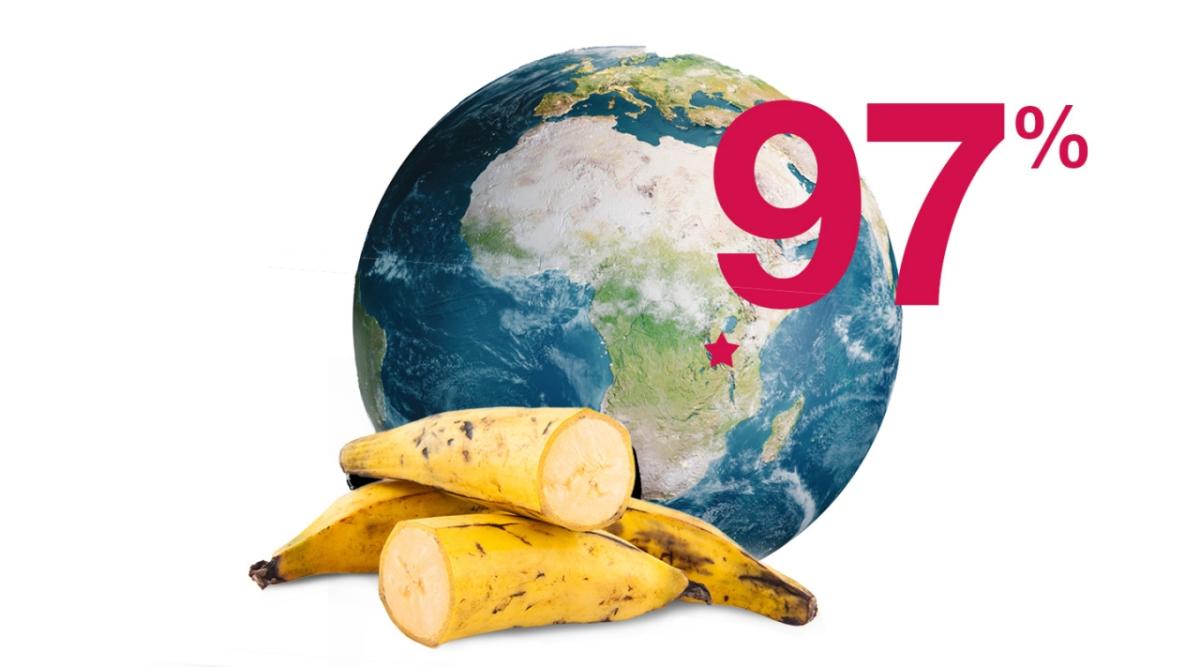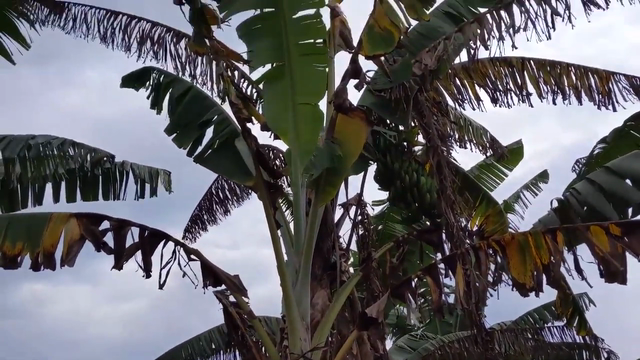On Common Ground: What Unites The Next Generation of Scientists, Activists, and Farmers?
If you’ve eaten a papaya in the past 25 years, you probably have crop biotechnology to thank.
The tasty tropical fruit was nearly wiped out by an aggressive virus outbreak in 1998, and genetically modified papayas—the quick-thinking work of University of Hawaii scientists—now account for 80% of the available stock. It’s a small example, but just one illustration of an inarguable fact: GMOs are changing the food we eat and the world we live in. And although it has already had a profound impact on the way we live, this technology is relatively young—and so are some of its greatest advocates.
This year, we’re reflecting on the history of GMOs and envisioning what may be possible in the future. We spoke to a new generation of scientists, activists, and farmers who grew up in a world defined by biotech and are now building their own relationships with this innovative technology. Each has their own unique hopes for the future—from bigger harvests and lower environmental impact, to healthier vegetables and drought-resistant seeds—but their optimism unites them. And they each believe that biotech is an essential tool to drive what’s next—for food, for their families, and for the planet.
Redefining a family business—and a family
Technically, Middletown, Missouri resident Larna Schnitker is a college student. But to hear her tell it, she’s just counting down the days until she can be back on her family’s farm in central Missouri. It’s the place where she’s the most in her element, and her love of both the physical place and what it represents underscores her every word. “I grew up on this farm and have been here my whole life. I had a passion for agriculture from a really young age—I think that was passed down to me through many generations, beginning with my great-grandmother, who actually bought the farm back in 1948,” she explains. For Larna, stories about the farm and the way it has operated over the years have been a constant presence in her life, and she sees herself in them. “I come from a long line of stubborn ladies, and I’m proud to continue that legacy,” she jokes.
Larna hopes to inherit the family farm someday and pass it down to a granddaughter of her own, but in the meantime, she’s had a front-row (tractor) seat for the ways farming has changed over the years. “The first thing that got me interested in the farm was tagging along with my dad. I've spent a lot of hours in the tractor seat or riding with my mom in the combine,” she recalls. Growing up keeping a close eye on the farm’s schedule, it was evident to Larna when her family was able to significantly cut down on the tractor passes they were making. “We've been able to cut back on our labor, cut back on the number of tractors we need. We've been able to really expand our operation at a quicker rate than some of our neighbors, because we're able to be more efficient,” she says. The difference between her family’s farm and her neighbors’? Genetically modified corn and soybean seeds.
“The most noticeable thing is higher yields,” she says. “When I choose a corn hybrid to plant in my field that has certain trait packages—that are earworm-resistant, rootworm-resistant, et cetera—that means less passes across the field for me, as a producer. But also, that's less impact. If we're going to consider runoff, or we're going to consider cost, if we're going to consider wanting to try to put less out there instead of more, then this is a great way to do that. Genetically modified crops have allowed us to be more cost-effective, producing a better crop that yields higher.”
Looking toward the next few decades when she’ll be making some of the decisions on the farm, Larna is optimistic about what a new generation of ag technology could mean for her family’s story. “There's potential to continue pursuing the different ways to make our crops better. That could include anything from starter fertilizer and liquid applied micronutrients, all the way to new GPS technology,” she says. From biotech and beyond, Larna is excited to see what the next few years of innovation will bring. “[We’re] really trying to use all the technology available to us, to be the best that we can be.”
Engineering a healthier future, at home and abroad
Excitement about the potential of new technologies is part of what drew Dr. Christine Shyu to her work at Bayer. “I always loved looking at plants, growing seedlings,” she says. “I went to graduate school to study plant-insect interaction and plant hormones. The whole concept of the process of improvement, as well as the impact of technology, was really exciting to me."
Christine saw an opportunity to have a real, tangible effect on the lives of people around the world with the new technologies in the pipeline. “Knowing that the work that I do has an impact, not just on a small community—not just like, a paper that I published—but to have a broader, positive impact, is something that motivates me a lot,” she says.
Christine is quick to note that the essential process of genetic modification is something humans have been trying to unlock for centuries—and she describes it as just the latest technology in a continuum of advancements she’s proud to be part of. “I like to use a coffee analogy. What if you go to a new town and you want a cup of coffee? In the old days, you would just walk around the neighborhood, hoping you’d run into a coffee shop. And you may, and then you’d get a cup of coffee. But it might not be that cup of coffee you’re craving. It’s a more random approach.” What sets new biotechnologies apart from the randomness of plant breeding, she says, is the power to have a specialized path to exactly the outcome you want—and to get there, fast. “Nowadays, how do we do it? We pick up our phone, right? You open an app, type coffee, pull up the map, and you can find your new favorite coffee shop. And then you get your perfect cup of coffee."
For Christine, the ability to design the traits that are required is the real draw. “It’s really important to understand that different areas have different needs—so that we can know the specific needs of a community, and to help address a specific issue, using different tailored solutions.” Those needs may be climate-related, like crops that stand up to flooding, or health-related, like vegetables with greater nutritional value. Or it could be as simple as ensuring the papaya is around for future generations to enjoy.
Of course, the appeal of papayas is secondary to fighting climate change or protecting the future of biodiversity, but these goals do have something in common. They’re all about preserving what’s important to us for future generations—something that hits close to home for Christine. “I have a three year old. Every parent wants to feed their children and provide the best, healthiest food...And that's really what motivates me, to think of the next generation,” she says.
Preserving a country’s history—and looking toward its future
Rwandan activist and agripreneur Pacifique Nshimiyimana sees biotech as a way to change the country’s destiny. But his inspiration for learning about it came from an older generation: his grandmother’s. “The idea was, how can I help my grandma, my aunties, my relatives who are relying on banana production to be able to make a living?” Pacifique grew up on his grandmother’s banana plantation, in a part of the world where bananas touch every part of the diet. “I remember the special day when my grandma taught me how to do banana juice extraction—I was going around all the time, looking for bananas, just to do extraction of the juice,” he recalls with a laugh.
For Pacifique, this was the beginning of a lifelong goal to preserve his community’s staple foods, income, and even their way of life. “Banana is one of the very important crops in East Africa, not only in Rwanda, because it is a source of all types of food. It is a source of income, but most importantly, it's one of the ingredients of our traditional cooking, food, and beverages,” he explains. “We will have banana beer, which has a huge role in all of our traditional ceremonies—be it the weddings, the birthdays...all of those traditional customs of our culture.”
But as important as these bananas are to Pacifique’s community, they were being threatened on all fronts. First from pests, then from Panama disease, and finally from the effects of global warming. In reaching out to activists around the world, Pacifique found that other countries were having success overcoming these challenges using GMOs—but they hadn’t been adopted in Rwanda yet. “Some friends of mine from Kenya linked me to an opportunity and I was like, ‘This is the solution. This is what we should tell our farmers to be aware of.’” GMOs had the potential to offer the relief Pacifique had been looking for—and that served as a wake-up call. “Even if we are suffering, some people do have the solution. It's now up to the activism we're building up here in Rwanda and across Africa to see how we can protect our plantations. They are so vulnerable to climate change,” he says.
Biotech has proven to be one of the ways to protect against those attacks. Bananas that are resistant to Panama disease, for instance, can offer a way forward—not just to protect the traditions of Pacifique’s community, but also to protect the harvests (and livelihoods) of farmers like those in his family. “I have a plantation that is over 70 years [old]. I got that plantation from my grandma and she got it from her parents. The idea that some varieties are going to be extinct...it's something that older generations don't even want to hear about when I talk to my communities,” he says.
But in collaborating with other activists and agripreneurs around the world, Pacifique has a renewed sense of hope that young people like him can be a source of far-reaching change. “I have hope that things are changing, and I believe mostly in the African youth like myself, who are keen on moving forward, on transforming ourselves.”
Creating common ground, with shared goals
The science of GMOs can feel abstract, but the reality is that biotech affects the most familiar parts of our lives. Technologies like this one align with some of humanity’s most essential, foundational goals: fighting climate change, eliminating malnutrition, and giving farmers the resources they need to grow enough food while using fewer natural resources. What biotech has accomplished toward these goals in the 25 years since its debut is remarkable, and it’s just one of many ways that food and farming are changing for the better. And with new technologies and innovations coming down the pipeline even more rapidly now, we’re looking forward to what the next 25, 50, or even 100 years will hold for the future of agriculture.





